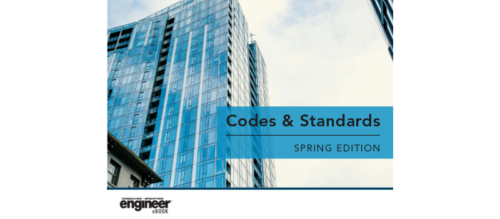Resolving the LOD dilemma
In late 2011, Cannon Design issued a series of process documents related to the effective employment of Revit as a BIM tool.
In late 2011, Cannon Design issued a series of process documents related to the effective employment of Revit as a BIM tool. Intended to augment and work with our standard base BIM execution plan, these process-oriented tools included a Cannon Design baseline model progression specification (MPS); the Cannon Design integrated model guidelines (IMG); and a draft version of a document we call the Cannon Design LOD Exhibit.
Despite the best of intentions, these tools stirred up confusion specifically around the concept of LOD. This confusion created something we termed the "LOD dilemma" for designers working day to day on projects in Revit. The questions of how LODs get measured, when to use LOD X on Project Z, etc., all left us struggling to explain why it mattered and what the intention was behind the concept of modeling progression. Thankfully, we are not alone in the profession.
Parallel to our own efforts to define and illustrate LOD graphically, professional organizations in the AECOO industry have taken on the same challenge and at the recent BIMForum San Antonio, we were given a glimpse into the AGC/AIA collaboration via the BIMForum’s technical subforum and their progress (and how it validates ours at Cannon Design). One of the key goals the subforum has is to develop what they are calling the LOD Catalog. While we may have a different title, our LOD Exhibit is based on the same concept: Define LOD graphically by building system types.
Additionally, the collaboration between the AGC and AIA has reached consensus on defining the difference between LODevelopment and LODetail.
New definitions:
– Level of Detail (LODetail): What it looks like.
– Level of Development (LODevelopment): How much it has been thought through.
What does this mean to us at Cannon Design and in the profession at large? It’s deceptively simple. Therefore, why don’t we start with what LOD does not mean.
– There is no such thing as a LOD 300 Revit model, for example, that would be an incorrect application of a LOD defintion. Within any building information model, we should have elements representing all LODs including 100, 200 and 300 as we progress through the project phase to phase. In short, LODs cannot be applied to more than one element or element category (or, more accurately, building system) at a time.
– LODs are not prescriptive. Instructions for a designer to perform a modeling task to a specific LOD is where the model progression specification (MPS) comes into play. By contrast to an MPS, LOD definitions are standards, not instructions. Therefore, our LOD Exhibit is not intended to tell a designer, "You shall model to LOD 300." Instead, a LOD Exhibit says, "LOD 300 probably looks something like this (see Figure n.n, for example)." A LOD Exhibit becomes sort of a ‘magic decoder ring’ that can be used to decode what is shown in a model by graphically showing us what our expectations are for each LODetail. This assists designers, quality leaders, and project managers vet where the modeling efforts are against defined expectations of completion as should be outlined in a model progression specification (MPS). Essentially, it gives everyone on the team, from designer to owner to operator, a means to compare those written expectations (BEP, MPS, and/or contract) against a graphic demonstration. We see this as an invaluable tool for managing reasonable BIM expectations across the project lifecycle.
– By contrast to what our Cannon Design LOD Exhbit is not, the MPS is where we tell designers, "You are responsible for LOD X at Phase Y." An MPS therefore identifies not only responsibility and required LOD for each phase or deadline, but also identifies the authorized uses of the elements modeled to LOD 100, 200, 300, etc.
These new terms, resources, specifications, etc., have internally and externally stirred some frustration that is arguably exacerbated by a constantly changing process that gets adjusted for every project as IPD and BIM evolve our practice. We are not ashamed to talk about it, and wish more people in our industry would honestly admit that this is hard. All in all, there is a lot going on that sounds complex, overwhelming, and sometimes frankly out of scope of normal day to day in design.
To find the signal in the noise, we strive to promote that BIM is conceptually a process, not a product.
In that mindset, thinking of these tools being process guides, the synergy between each is important and cannot be set aside. If it wasn’t hard, it wouldn’t be worth doing, so we see these tools as a chance to start a dialog about practicing BIM the right way.
As part of the introduction included in our next release of the Cannon Design LOD Exhibit, we diagrammed the relationships between each process tool, below, to explain how we use them to make better decisions:
While it might seem obvious, it was important for us to emphasize that the key lies in better decision making, and that our BIM process tools are there to help us make better decisions as we progress our designs forward. Thus, by making better decisions we can achieve quality building information modeling in Autodesk Revit (our primary BIM authoring tool).
Our goal with these tools is to effectively overcome the “LOD dilemma,” and produce models that create balanced expectations on all sides of the AECOO industry. And, we recognize that this is an evolution. After a recent presentation by Penn State, also at the BIMForum San Antonio, regarding their identification of LOD 510, 520, etc., for owner requirements, we know that our own LOD Exhibit and Baseline MPS are similarly taking a stab at defining something that is inherently disruptive.
It is exciting to see what BIMForum Technical Sub-forum is producing in the form of the LOD Catalog, a very similar approach to our own LOD Exhibit. Both seem to be the right approach to a difficult topic for a visual industry. Although we see our Exhibit as being able to speak to how we work as an integrated design practice in our own words, the Catalog itself will be useful as a standard reference guide for everyone in the industry about LOD. We will keep trying our own hand at managing modeling expectations with a focus on process and we would welcome your input, comments, and questions. Please email Liz Chodosh (echodosh@cannondesign.com) for more information on our BIM process tools and/or where we are in our evolving implementation of tools like these at Cannon Design.
Do you have experience and expertise with the topics mentioned in this content? You should consider contributing to our CFE Media editorial team and getting the recognition you and your company deserve. Click here to start this process.



